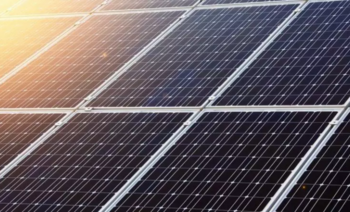
The “green magic transition” may be the greatest con job in history.
Despite the hype over the ever-increasing connected capacity at wind and solar farms worldwide, none, yes, let me repeat that, none have replaced any of the hydro, natural gas, coal, or nuclear generating plants that are providing continuous and uninterruptable electricity to people and businesses around the world.
Solar may work occasionally at homes and businesses as a source for supplemental intermittent electricity to lower daily demand from the grid, but they’re still connected to a reliable source for continuously and uninterruptable power. We all know, if the sun is not shinning, their only source of electricity are the power generating plants feeding the grid even with the burgeoning mass storage technology popping up in the most auspicious places.
It’s not that we’re not trying to tap into the emission free electricity provided by Mother Nature, but wind and sunshine are too intermittent. They are not the panacea. They come with their own ills.
With the success the green movement has had on stymying nuclear, it’s now attracting big oil companies to invest huge sums into the renewables craze.
There are three main reasons for that kind of investment from “big oil” into renewables. First, it’s a great public relation move. Second, it’s a fantastic business investment, as every wind and solar site generating intermittent electricity needs a natural gas backup generating plant to provide continuous and uninterruptable electricity. Third, if they fail, the government incentives are “no take back” guarantees and the loss is a tax write off. So, they basically get to dabble for free.
Another supposedly electrical solution to lessen our need for fossil fuels are electric vehicles, yet even a growth of one hundred times the number of EV’s to 400 million by 2040 would only represent five percent of the global demand as total vehicles worldwide are projected to be 2 billion by 2035. By some estimates, the total number of vehicles worldwide could increase to 2.5 billion by 2050.
In addition to the dismal impact projected for EV’s is the dark side of their “green” technology, i.e., no supply chain transparency for the lithium-Ion batteries that power them.
The key minerals used in today’s batteries are cobalt, of which 60% is sourced from one country, the Democratic Republic of the Congo (DRC), and lithium, of which more than 50% is sourced from the Lithium Triangle in South America, which covers parts of Argentina, Bolivia and Chile.
Today 20% of cobalt is mined by hand. The mere extraction of the exotic minerals cobalt and lithium used in the batteries of EVs presents social challenges, human rights abuse challenges, and environmental challenges. Amnesty International has documented children and adults mining cobalt in narrow man-made tunnels, at risk of fatal accidents and serious lung disease.
The cobalt mined by children and adults in these horrendous conditions in the DRC in Africa enters the supply chains of some of the world’s biggest brands. There are no known “clean” supply chains for lithium and cobalt, yet the richest and most powerful companies in the world continue to offer up the most complex and implausible excuses for not investigating their own supply chains.
Elon Musk’s electric product manufacturing conglomerate is one of the biggest offenders.
Tesla Inc.’s “dirty little secret” is turning into a major problem for the EV industry—and perhaps mankind. If you think Tesla’s Model S is the green car of the future, think again. Energy independence, a reduction in greenhouse gas emissions and especially lower fuel costs promises are all factors behind the rise in the popularity of electric vehicles. Unfortunately, under scrutiny, all these promises prove to be more fiction than fact.
Another problem may be brewing for Tesla as some of their solar panels have been accused of initiating fires at Walmart and Amazon facilities. With lawsuits coming from two of the richest companies in the world onto the cash-bleeding Tesla, the gild is coming off the lily.
To drive the point home; while we in the developed countries with thriving economies continue to seek out an “alternative energy” that can maintain our lifestyles, the billions of people in undeveloped countries are starting to enhance their lifestyles with the most abundant and cost-effective energy source available to them today; coal.
When those billions rise out of poverty and develop modern economies, maybe, by then we’ll have a better grasp on a real alternative to those deep earth minerals/fuels that renewable intermittent electricity cannot facilitate.
Granted we need to continue to pursue greater efficiencies and conservation in our daily lives. But, at the same time, we need to admit that the current state of green technology is just not working, as renewables have yet to replace continuous and uninterruptable electricity that people get from hydro, natural gas, coal, and nuclear generating plants.
This article first appeared in Eurasia Review
Ronald Stein, P.E. is the Founder and Ambassador for Energy & Infrastructure at PTS Advance.












